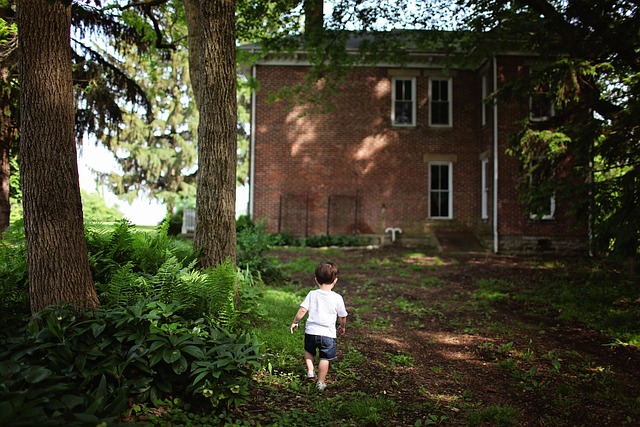Dark Overhanging Trees?
Will a Crown Reduction Improve your Garden?
Picture this: you step into your garden on a rare sunny Scottish afternoon, hoping to enjoy a cuppa outside—only to find your patio still damp, your grass patchy, and everything cast in shadow because of those dark overhanging trees. The culprit? Giant beech trees looming over your fence, their branches stretching like dark fingers, stealing every drop of sunlight.
Sound familiar? You’re not alone. Across Scotland, homeowners battle with overgrown trees that turn gardens into gloomy, moss-covered caves. But before you grab a chainsaw or start arguing with your neighbour, there’s a smarter solution: crown reduction.
I’ve seen it time and again—trees that seemed like permanent nuisances transformed with the right pruning. But does it really work? And how do you do it properly? Let’s break it down.

Why Dark Overhanging Trees Wreck Your Garden (And Your Mood)
Big trees are beautiful—until they’re not. That oak or sycamore might have been a sapling when your house was built, but decades later, it’s now:
Blocking sunlight – Your grass won’t grow, your flowers struggle, and your patio stays wet for days.
Dropping debris – Leaves, twigs, and sticky sap turn your garden into a mess.
Causing neighbour tension – Whose tree is it? Who pays for trimming?
Risking storm damage – A heavy branch could come crashing down in the next gale.
A client in Bishopbriggs once told me her back garden hadn’t seen proper sunlight in five years. She’d given up on growing anything. Then, after a professional crown reduction, her space was brighter within weeks.
What Exactly Is Crown Reduction? (And Why It’s Not Just “Chopping Branches”)
Crown reduction is strategic pruning—cutting back the outermost branches to reduce the tree’s size without butchering it. Unlike topping (a big no-no that butchers trees and leaves them vulnerable to disease), crown reduction keeps the tree healthy while letting light through.
What a Good Crown Reduction Does:
✔ Thins the canopy – More dappled light reaches the ground.
✔ Reduces weight – Fewer heavy branches = less storm risk.
✔ Improves shape – The tree still looks natural, just smaller.
✔ Encourages healthy regrowth – Done right, the tree bounces back stronger.
A bad trim, though? That’s how you end up with a lopsided, diseased tree. I once saw a homeowner hack back a leylandii themselves—only for it to grow back twice as thick the next year. Professional cuts save money long-term.
Will It Actually Brighten Your Garden? (Spoiler: Yes, If Done Right)
The difference can be stark (pun intended). One Glasgow gardener shared before-and-after photos—where once there was only shadow, sunlight now reached their flower beds for the first time in a decade.
But results depend on:
The tree type – Beech and oak respond well; leylandii might need regular trims.
How much you reduce – Taking off 15-20% is usually safe; more can stress the tree.
The timing – Late autumn to winter is best (avoid nesting birds, March-August).
“Should I Just Remove the Tree Instead?”
Sometimes, yes. If the tree is diseased, unstable, or the wrong species for the space (looking at you, giant leylandii hedges!), removal might be the best call to remedy dark overhanging trees in your garden.
But crown reduction is often cheaper, faster, and kinder to your garden’s ecosystem. (It’s the one we prefer!) Mature trees support birds, insects, and even your soil health improving environmental sustainability. Plus, removing a big tree can lower your property’s value—people love greenery, just not when it’s swallowing their house.
How to Get It Done Right (Without Getting Ripped Off)
1. Find a Qualified Arborist
Look for “tree surgeon near me” with UK qualifications (like Lantra or NPTC).
Check reviews—cheap cowboys often leave trees worse than they found them.
2. Get a Proper Assessment of those Dark Overhanging Trees
A good arborist will:
Check for tree preservation orders (some Scottish councils restrict pruning).
Advise on the best time of year for the job.
Give a written quote (average in Scotland: £200–£800, depending on size).
3. Avoid DIY Disasters
Unless it’s a small job, put the chainsaw down. Bad cuts invite disease, and over-pruning can kill the tree. Plus, working at height? Not worth the A&E trip.
The Verdict: Is Crown Reduction Worth It?
If your garden feels like a scene from Macbeth, yes, absolutely. A proper crown reduction can bring back light, reduce maintenance headaches, and even save a tree from future damage.
But—only if done by a pro. A botched job can make things worse. So, before you resign yourself to a life of shade, get a tree surgeon out for an assessment. You might be surprised how much difference a few well-placed cuts can make.
Ever had a tree transformed by pruning? Or a horror story from a bad trim? Share your experiences below—I’d love to hear them!
